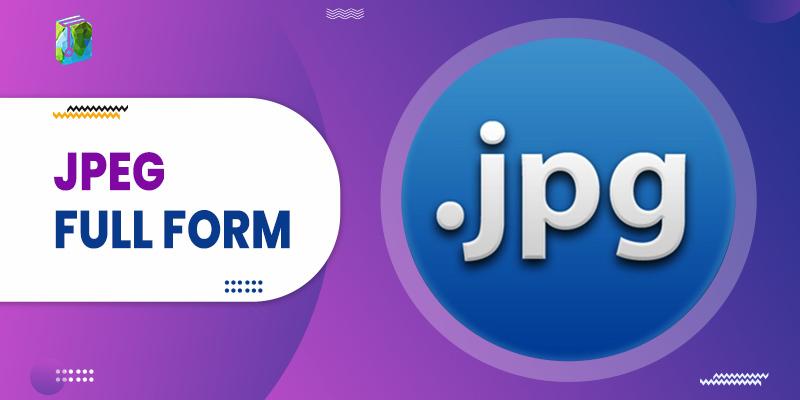The full form of JPEG is the Joint Photographic Experts Group. JPEG also is known as JPG, is a joint working group of the International Standardization Organization (ISO) and the International Electrotechnical Commission (IEC). It formed a standard method of compressing graphic/design images in the year 1986. The term is used most often with its filename extension .jpg or .jpeg.
This article contains the full form of JEPG along with its features, advantages, and disadvantages.
JPEG Full-Form | Joint Photographic Experts Group
JPEG works best with photographs and artwork. It is a lossy compression technique because some information is lost when the image is compressed. It can reduce up to 5% of the actual size with the loss of some information.
Important Features of JPEG
- This unique compression, as well as quick and efficient sharable feature, allows JPEG files to be used widely on the Internet, Computers, and Mobile devices.
- A large number of JPEG image files can be stored in small storage space.
- JPEG files can contain high-quality image data with lossless compression. It can provide full-color data with 20:1 compression.
- It can be converted to many formats such as pdf or word.
- The JPEG scheme has 29 distinct coding processes.
- JPEG file format follows the ISO standard 10918.
JPEG Categories
- Mostly used extensions for JPEG format is: .jpeg, .jpg, .jpe, .jif, . jfif, exif
- Out of these, there are two major categories of JPEG image compression.
- JPEG/Exif (Exchangeable Image File Format)– It is Used to capture and store pictures by digital cameras.
- JPEG/JFIF (JPEG File Interchange Format)–It is used for image transferring and storing, especially over the Internet.
Advantages of JPEG Image Format
There are several advantages of JPEG image format:
- The JPEG format is being used for a long time and is extremely portable.
- It is compatible with almost every image processing application.
- It is compatible with most of the hardware devices e.g printers etc – therefore it is very easy to print the images in JPEG format.
- JPEG format can be used to store fast-moving high-resolution images which would be a blur in other image formats.
- The reduced and compressed size of JPEG images makes this file format suitable for transferring images over the internet because it consumes less bandwidth.
- Today, people use JPEG in everything from creating business documents to interacting on social media. It is used to send photographs on the internet because of its great compression technique. It can be used for a maximum image size of 65535×65535 pixels.
Disadvantages of JPEG Image Format
- When an image is compressed, sometimes it gets degraded, meaning the quality of the image has declined. If saving a GIF or PNG file, the data remains the same even though the quality of the image has declined. In case a high-resolution image is needed by someone, image compression acts as a disadvantage.
- To compress the images, some of the photo’s data is erased permanently, making it necessary to ensure to have an uncompressed backup before starting. Otherwise, the high quality of the original uncompressed image gets lost permanently.

